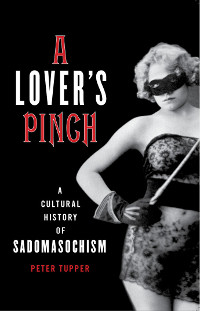- I’m old enough to remember how different and exciting the Internet was in the 1990s. So does Violet Blue, who lays out just much has changed for the worse since then, especially with the censoring of Tumblr last year. “I can tell you for a fact that Tumblr helped a generation of frightened, isolated kids trying to figure out their sexual identity.” Her essay on Engadget.
- David Wraith has an overview of how terrible the SESTA/FOSTA laws are, stifling freedom of expression on sexual matters while subjecting sex workers to greater danger.
- On the brighter side, England has reviewed its obscenity laws and a number of kinks, including spanking, BDSM, and female ejaculation, are now okay in porn, as long as they are shown as consensual.
- Kink Guidelines is a project “to explore what constitutes clinical best practices in working with those who are interested and/or involved in kink, BDSM, and/or fetish eroticism.
- The city leaders of San Francisco have approved the construction of Eagle Plaza, a small park commemorating the Eagle bar’s contribution to the LGBTQ and leather/kink cultures.
- Lupercalia, the ancient Roman festival that loosely corresponds to Valentine’s Day, was known for men playfully whipping women “believing that the pregnant will thus be helped in delivery, and the barren to pregnancy”, according to Plutarch. Today, whipping rituals are a part of fertility festivals in parts of Europe, Mexico and Asia. From Vice.
- Even though Walmart, regular drugstores and other mainstream retailers now stock vibrators and other sex toys, sex products are still caught up in controversy. Producers risk rejection from retailers, payment processors, crowdsourcing platforms, and advertising venues. Sex toys have to toe the line of being for “health and wellness”, not for pleasure, which would be prurient. The Verge has more.
- Puppyplay for gay kinksters seems to be on the rise lately, and Slate has a profile of a San Francisco polyamorous pack.
- Kerrang has a list of BDSM-themed songs, including the classic “Venus in Furs” by Velvet Underground.
Feb 162019
